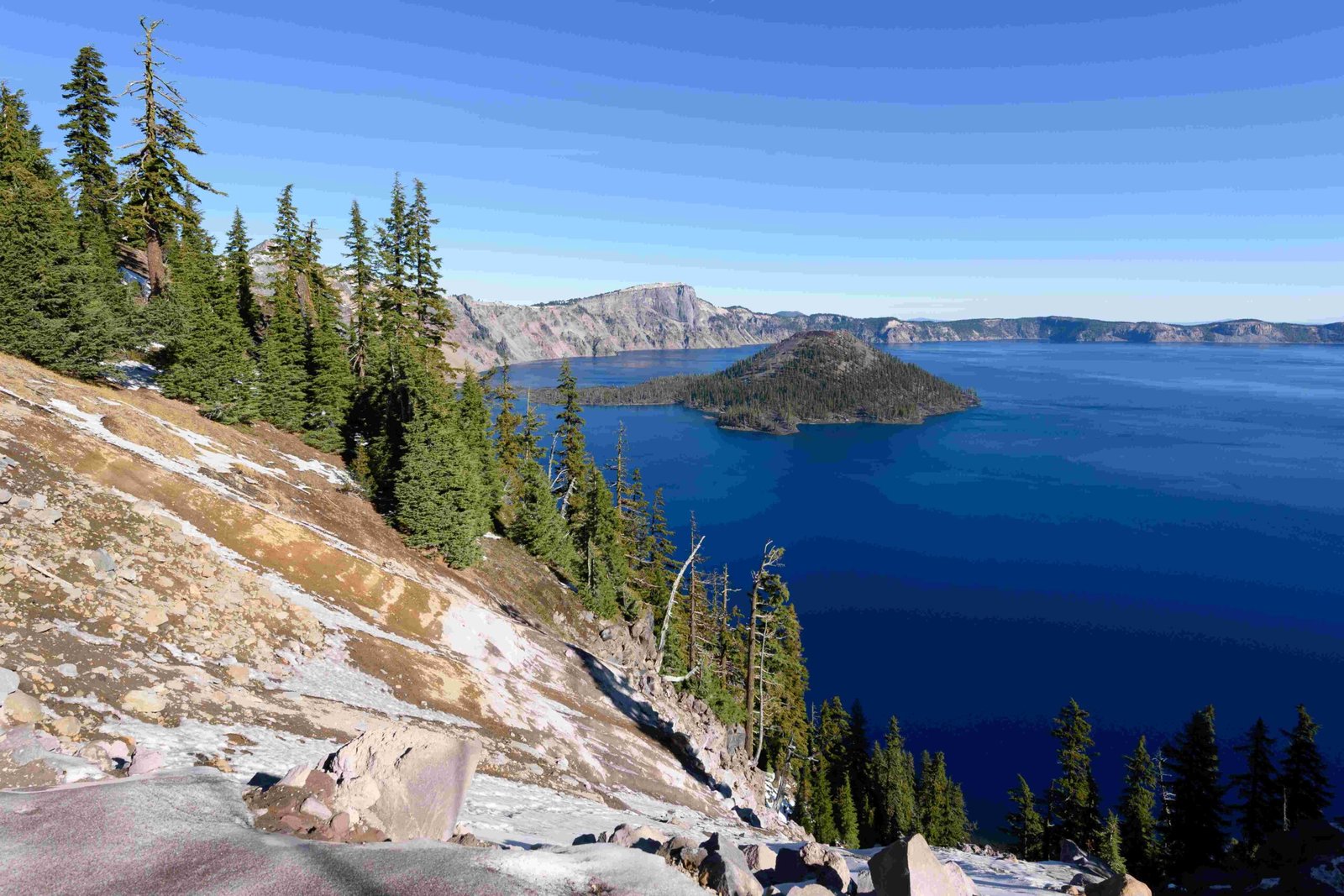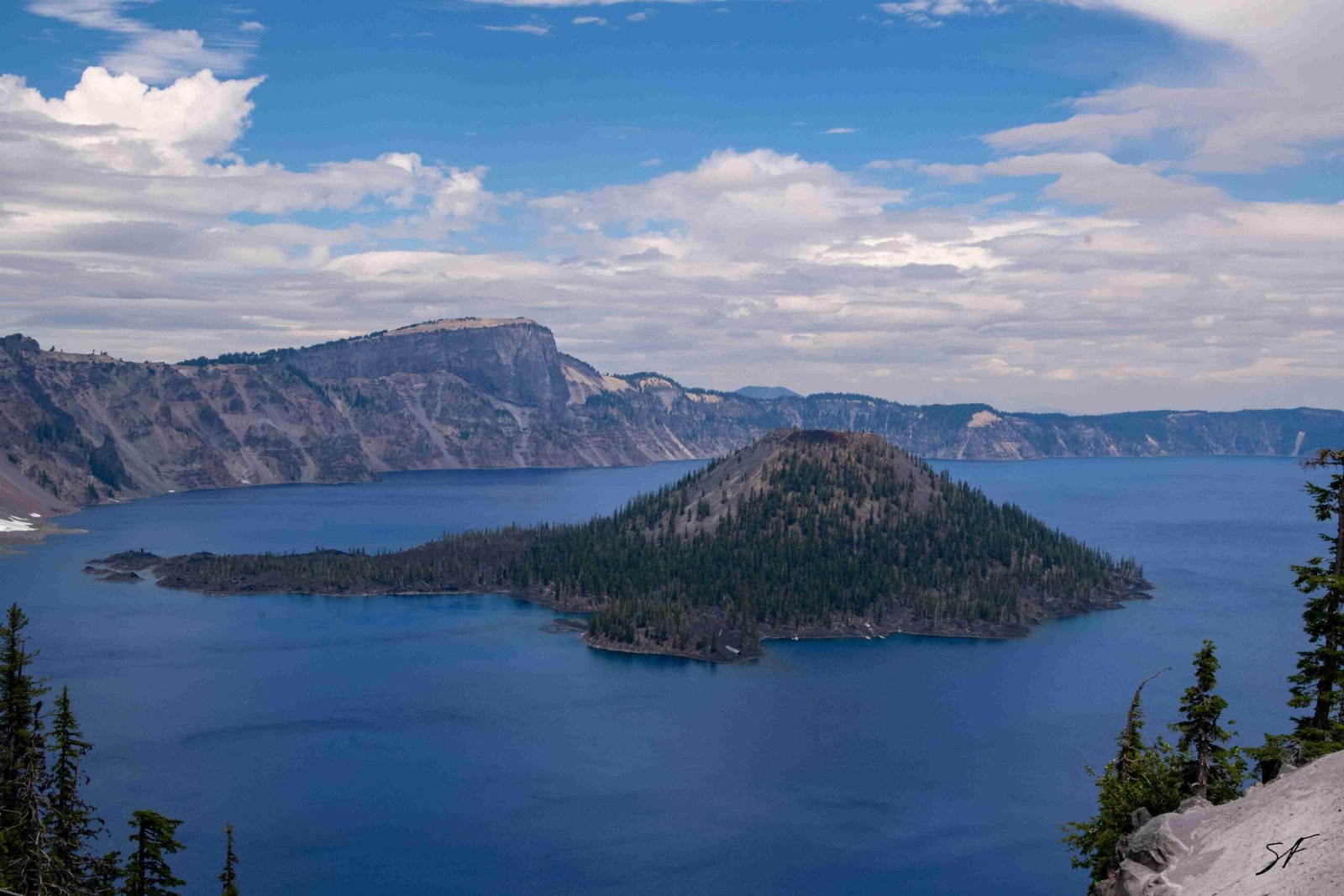Crater Lake National Park, renowned for its deep blue waters and stunning landscapes, experiences a wide range of temperatures throughout the year. The park’s high elevation and continental climate contribute to significant temperature variations, with average temperatures fluctuating from below freezing in winter to mild conditions in summer. This guide provides a detailed look at the average temperatures in Crater Lake National Park, offering insights into seasonal changes and climate trends.
What Are the Monthly Average Temperatures at Crater Lake National Park?

Crater Lake National Park experiences distinct temperature patterns throughout the year. Here’s a breakdown of the average temperatures for each month:
| Month | Minimum (°C/°F) | Maximum (°C/°F) | Mean (°C/°F) |
|---|---|---|---|
| January | -6.8°C (20°F) | 0.8°C (33°F) | -3°C (26.6°F) |
| February | -7.3°C (19°F) | 0.9°C (34°F) | -3.2°C (26.2°F) |
| March | -6.5°C (20°F) | 2.3°C (36°F) | -2.1°C (28.2°F) |
| April | -4.9°C (23°F) | 4.6°C (40°F) | -0.2°C (31.6°F) |
| May | -1.5°C (29°F) | 9.4°C (49°F) | 4°C (39.2°F) |
| June | 0.9°C (34°F) | 13.9°C (57°F) | 7.4°C (45.3°F) |
| July | 5.2°C (41°F) | 20.5°C (69°F) | 12.9°C (55.2°F) |
| August | 5.3°C (42°F) | 20.7°C (69°F) | 13°C (55.4°F) |
| September | 2.8°C (37°F) | 17.2°C (63°F) | 10°C (50°F) |
| October | -1°C (30°F) | 10.4°C (51°F) | 4.7°C (40.5°F) |
| November | -4.9°C (23°F) | 3.3°C (38°F) | -0.8°C (30.6°F) |
| December | -7.2°C (19°F) | 0.4°C (33°F) | -3.4°C (25.9°F) |
This table illustrates the significant temperature variations throughout the year, with the coldest temperatures occurring in winter months and the warmest in summer.
How Do Summer Temperatures Affect Visitor Experience at Crater Lake?

Summer at Crater Lake National Park offers the most comfortable temperatures for visitors, with July and August being the warmest months. During these peak summer months:
- July averages: Minimum 5.2°C (41°F), Maximum 20.5°C (69°F), Mean 12.9°C (55.2°F)
- August averages: Minimum 5.3°C (42°F), Maximum 20.7°C (69°F), Mean 13°C (55.4°F)
These mild to warm daytime temperatures create ideal conditions for various activities:
- Hiking: Comfortable temperatures for exploring the park’s numerous trails.
- Boat tours: Pleasant conditions for enjoying the lake’s crystal-clear waters.
- Scenic drives: Perfect weather for taking in the park’s breathtaking views.
- Camping: Warm days and cool nights provide an enjoyable outdoor experience.
However, visitors should be prepared for temperature fluctuations:
- Daytime highs can occasionally exceed 29°C (85°F), especially at lower elevations.
- Nighttime temperatures can drop significantly, sometimes approaching freezing even in summer.
What Challenges Do Winter Temperatures Present at Crater Lake?
Winter at Crater Lake National Park brings extreme cold and heavy snowfall, presenting unique challenges and opportunities:
- Temperature extremes:
- Average minimum temperatures in December, January, and February range from -7.3°C to -6.8°C (19°F to 20°F).
-
During cold waves, temperatures can plummet below -20°C (-4°F).
-
Snowfall impact:
- The park receives an average of 12.5 meters (41 feet) of snow annually.
-
Snow typically lasts from mid-October to mid-May, limiting accessibility.
-
Winter activities:
- Cross-country skiing and snowshoeing become popular alternatives to hiking.
-
Ranger-led snowshoe walks offer unique winter experiences.
-
Road closures:
- Many park roads become inaccessible due to snow and ice.
-
The Rim Drive, circling the lake, is typically closed from late October to early July.
-
Visitor preparedness:
- Warm, layered clothing is essential for winter visits.
- Visitors should check weather forecasts and road conditions before traveling.
How Are Climate Changes Affecting Crater Lake’s Temperature Patterns?
Crater Lake National Park is experiencing noticeable changes in its temperature and precipitation patterns due to climate change:
- Decreasing snowfall:
- Since 1931, snowfall totals have shown a downward trend.
-
Climate researchers predict this trend will continue, with the Pacific Northwest experiencing less snow in coming decades.
-
Warmer temperatures:
- The park has seen an overall warming trend, particularly in winter months.
-
This warming contributes to earlier spring thaws and later first frosts.
-
Reduced snow accumulation:
- Significant decreases in snow depth and total snowfall have been observed over the years.
-
This affects the park’s hydrology and ecosystems.
-
Impact on flora and fauna:
- Changing temperature patterns influence plant blooming times and animal migration patterns.
-
Some species may struggle to adapt to these rapid changes.
-
Visitor season changes:
- Warmer temperatures may extend the peak visitor season.
- Winter activities like skiing may become less reliable or have shorter seasons.
What Should Visitors Know About Crater Lake’s Temperature Variations?
When planning a visit to Crater Lake National Park, it’s crucial to understand and prepare for the park’s temperature variations:
- Seasonal planning:
- Summer (July-August) offers the warmest and most stable temperatures.
- Winter (December-February) brings extreme cold and heavy snowfall.
-
Spring and fall can be unpredictable, with rapid temperature changes.
-
Elevation effects:
- The park’s high elevation (1,883 meters or 6,178 feet at the lake surface) contributes to cooler temperatures.
-
Temperature can drop approximately 1.6°C (3°F) for every 300 meters (1,000 feet) increase in elevation.
-
Layered clothing:
- Even in summer, bring layers to accommodate cool mornings and evenings.
-
Winter visitors should pack extreme cold weather gear.
-
Sun protection:
- The high elevation increases UV exposure, so sunscreen is essential year-round.
-
Sunglasses are crucial, especially in winter when snow reflection can be intense.
-
Hydration:
- The dry climate and elevation can lead to quicker dehydration.
-
Visitors should drink plenty of water, regardless of the temperature.
-
Activity planning:
- Check weather forecasts before planning outdoor activities.
- Be prepared to adjust plans based on sudden temperature changes or weather events.
Understanding Crater Lake National Park’s average temperatures and their variations is key to a safe and enjoyable visit. By being prepared for the park’s unique climate, visitors can fully appreciate the stunning beauty of this natural wonder, from its deep blue waters to its snow-capped rim, in any season.
References:
1. Crater Lake climate: weather by month, temperature, rain | Climates to Travel
2. Crater Lake weather by month: monthly climate averages | Oregon | Weather2Travel
3. Weather and Climate at Crater Lake | Crater Lake Institute

